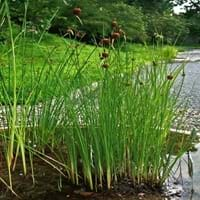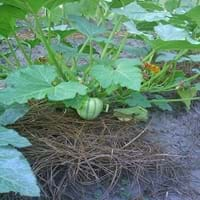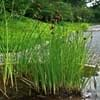Life Span
Perennial
Annual
Origin
Eastern Europe, Western Asia
North America, Mexico, Central America
Types
Common Cattail, Southern Cattail, Dwarf Bulrush
Summer Squash, Winter Squash
Habitat
Lake margins, Ponds, Swamps
Cold Regions, Subtropical climates
USDA Hardiness Zone
3-11
Not Available
Sunset Zone
21,22
A1, A2, A3, H1, H2, 1a, 1b, 2a, 2b, 3a, 3b, 4, 5, 6, 7, 8, 9, 10, 11, 12, 13, 14, 15, 16, 17, 18, 19, 20, 21, 22, 23, 24
Habit
Upright/Erect
Vining/Climbing
Flower Color
Yellow, Green, Brown, Chocolate
Yellow, Orange, Dark Green
Flower Color Modifier
Not Available
Bicolor
Fruit Color
Light brown, Light Red
Orange, Dark Green, Ivory
Leaf Color in Spring
Green, Dark Green
Lemon yellow
Leaf Color in Summer
Green, Dark Green
Green, Dark Green
Leaf Color in Fall
Green, Dark Green
Green, Dark Green
Leaf Color in Winter
Brown
Not Available
Leaf Shape
Long linear and narrow
Arrowhead
Plant Season
Summer, Fall, Winter
Summer, Fall
Sunlight
Full Sun, Partial Sun
Full Sun
Growth Rate
Fast
Very Fast
Type of Soil
Clay, Loam, Sand
Loam, Sand
The pH of Soil
Acidic, Neutral
Neutral
Soil Drainage
Poorly Drained
Well drained
Bloom Time
Summer, Late Summer, Early Fall
Indeterminate
Tolerances
Wet Site
Drought
Where to Plant?
Container, In Water
Container, Ground
How to Plant?
Runners
Seedlings
Plant Maintenance
Low
Medium
Watering Requirements
Plant grows in water
Keep ground moist, Requires regular watering, Requires watering in the growing season, Water Deeply, Water when top layer of soil becomes dry
In Summer
Aquatic Plant
Lots of watering
In Spring
Aquatic Plant
Ample Water
In Winter
Aquatic Plant
Average Water
Soil pH
Acidic, Neutral
Neutral
Soil Type
Clay, Loam, Sand
Loam, Sand
Soil Drainage Capacity
Poorly Drained
Well drained
Sun Exposure
Full Sun, Partial Sun
Full Sun
Pruning
Prune in early spring, Remove damaged leaves, Remove dead branches, Remove dead leaves
No pruning needed
Fertilizers
Nitrogen, Phosphate
Compost
Pests and Diseases
Red blotch
Downy mildew, Fungal Diseases, Red blotch
Plant Tolerance
Drought
Drought
Flower Petal Number
Single
Single
Foliage Texture
Medium
Coarse
Foliage Sheen
Matte
Matte
Attracts
Birds, Flying insects
Insects
Allergy
no allergic reactions
Skin irritation, Skin rash
Aesthetic Uses
Beautification, Showy Purposes, Water gardening
Not Used For Aesthetic Purpose
Beauty Benefits
Not Available
Not Available
Environmental Uses
Food for animals, Food for birds, Food for insects, Nesting sites for birds
Food for birds, Food for insects
Medicinal Uses
Nutrients
anti-cancer, Bone strength, Fiber, Indigestion, Nutrients, Weight loss
Part of Plant Used
Leaves
Fruits
Other Uses
Decoration Purposes, Showy Purposes, Used as Ornamental plant
Used As Food, Used for its medicinal properties
Used As Indoor Plant
Yes
No
Used As Outdoor Plant
Yes
Yes
Garden Design
Bog Garden, Container, Water Gardens
Edible, Herb / Vegetable, Vine
Botanical Name
TYPHA minima
CUCURBITA pepo 'Delicata'
Common Name
Dwarf Cattail
Peanut Squash, Squash
In Hindi
बौना कैटेल
देलिकाता स्क्वाश
In German
Dwarf Rohrkolben
Delicata Squash
In French
Cattail nain
Delicata Squash
In Spanish
Espadaña enano
Delicata Squash
In Greek
Νάνος Cattail
Delicata Σκουός
In Portuguese
Tifa Dwarf
Delicata Squash
In Polish
Dwarf Ożypałka
Delicata Squash
In Latin
Pumilio Cattail
delicata Cucurbitae
Phylum
Tracheophyta
Spermatophyta
Class
Liliopsida
Magnoliopsida
Order
Poales
Cucurbitales
Family
Typhaceae
Cucurbitaceae
Clade
Angiosperms, Commelinids, Monocots
Angiosperms, Eudicots, Rosids
Tribe
Not Available
Not Available
Subfamily
Not Available
Cucurbitoideae
Number of Species
Not Available
Not Available
Season and Care of Dwarf Cattail and Delicata Squash
Season and care of Dwarf Cattail and Delicata Squash is important to know. While considering everything about Dwarf Cattail and Delicata Squash Care, growing season is an essential factor. Dwarf Cattail season is Summer, Fall and Winter and Delicata Squash season is Summer, Fall and Winter. The type of soil for Dwarf Cattail is Clay, Loam, Sand and for Delicata Squash is Loam, Sand while the PH of soil for Dwarf Cattail is Acidic, Neutral and for Delicata Squash is Neutral.
Dwarf Cattail and Delicata Squash Physical Information
Dwarf Cattail and Delicata Squash physical information is very important for comparison. Dwarf Cattail height is 30.50 cm and width 45.70 cm whereas Delicata Squash height is 60.00 cm and width 90.00 cm. The color specification of Dwarf Cattail and Delicata Squash are as follows:
Dwarf Cattail flower color: Yellow, Green, Brown and Chocolate
Dwarf Cattail leaf color: Green and Dark Green
Delicata Squash flower color: Yellow, Orange and Dark Green
- Delicata Squash leaf color: Lemon yellow
Care of Dwarf Cattail and Delicata Squash
Care of Dwarf Cattail and Delicata Squash include pruning, fertilizers, watering etc. Dwarf Cattail pruning is done Prune in early spring, Remove damaged leaves, Remove dead branches and Remove dead leaves and Delicata Squash pruning is done No pruning needed. In summer Dwarf Cattail needs Aquatic Plant and in winter, it needs Aquatic Plant. Whereas, in summer Delicata Squash needs Lots of watering and in winter, it needs Average Water.





